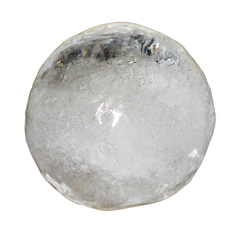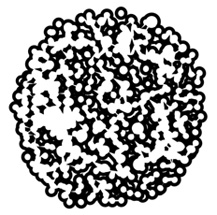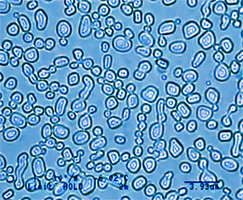(2/12) Now let’s see our general block of ice (left photo). It consists of a numerous number of ice grains as illustrated. The right photo is an actual photomicroscope snapshot of the ice grains comprised in an ice block [1]. You can observe this image on a photomicroscope that equips a special stage whose temperature can be lowered to at least -40 ~ -50 deg C [2]. Each ice grain is called “a single ice crystal” in physics, which normally forms a disk-like rounded shape. In cold air, it is modified into the well-known "snow flake shape” [3]. A point is that when a chilled (supercooled) water freezes, numerous single ice crystals are generated in that water. They adsorb surrounding waters to undergo crystal growth and assemble together, which leads to create a general block of ice. This is a key to understand AFP's function. (->next) (->page1) (->home) |
|





